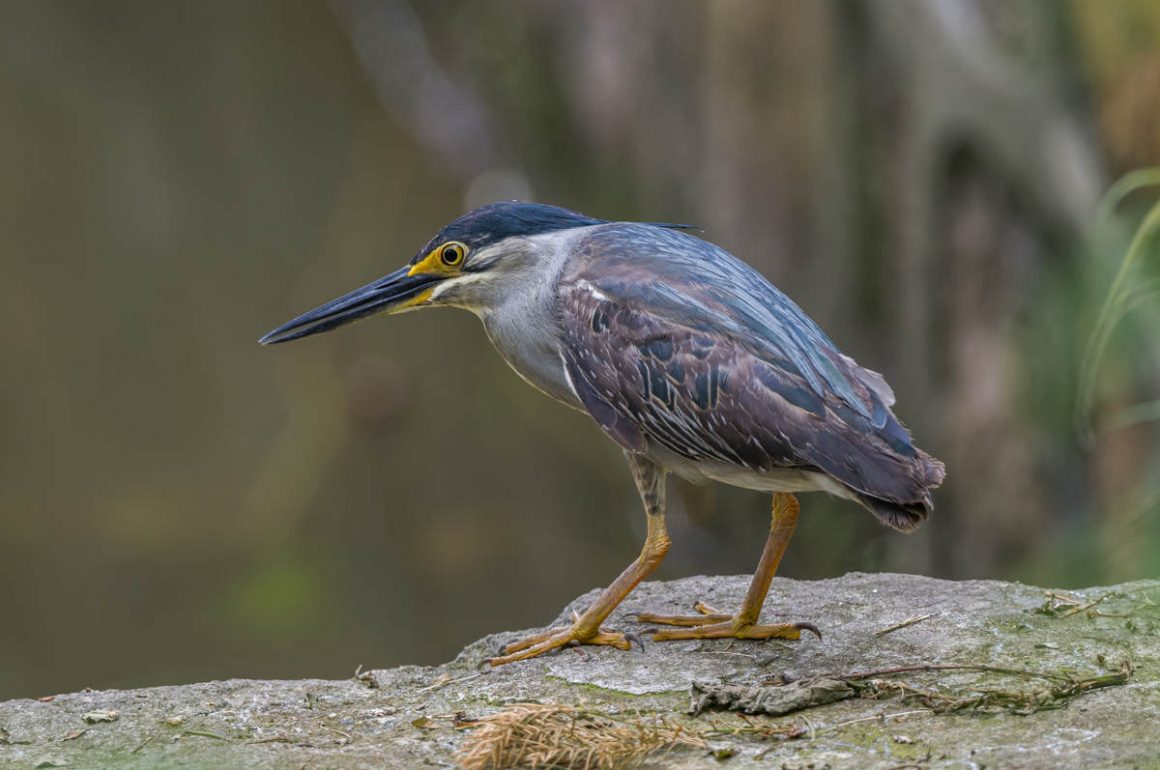
With the lockdown lasting until the end of May (ironically thus pretty much including the whole spring migration – the divine sense of humor is a rather malign one, I am afraid), June still had the freedom of birding anywhere in Shanghai, not just inside a smallish compound.
In fact, I went out birding seven out of the first nine days of June – a behavior that Bella from Alpinebirding described as “Revenge Birding”. I guess she has a point there.
One of the first few birds I saw on my first day of freedom was this female Amur Paradise Flycatcher. Quite a beauty, and a bit more modest than the long-tailed males. As the males tend to migrate a bit earlier, I probably missed them for this year anyway.
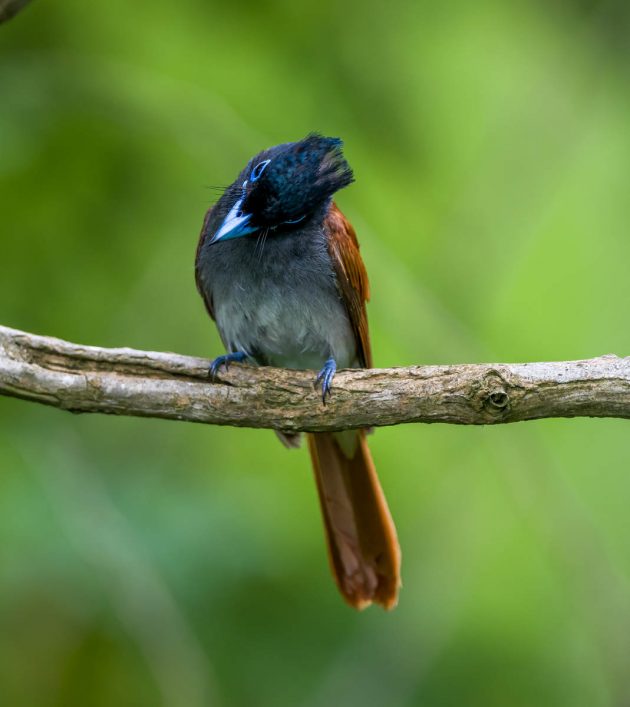
One of these photos would almost certainly have made the cover of this post if the design did not require a more horizontal format. This is also why you very rarely find a photo of a giraffe on top of one of these posts – the other reason of course being that a giraffe photo would be relatively pointless in a birding blog.
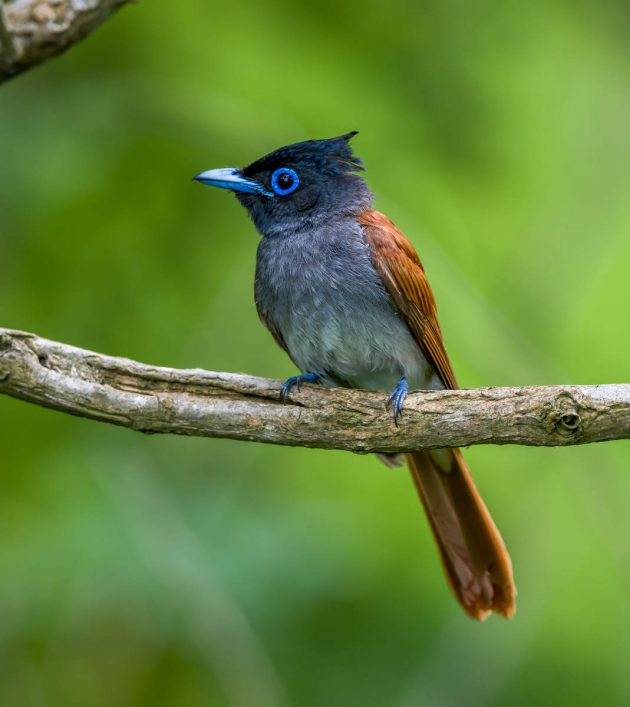
The bird has two main calls which are quite different but which seem to be used more or less interchangeably. If I was an ornithologist aiming for a grant, I would now definitely highlight the need for more research on this topic.
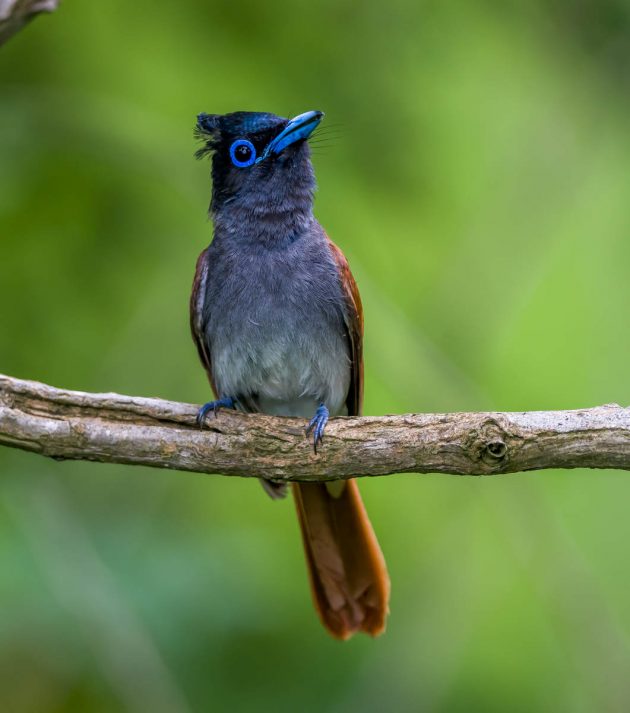
After writing this last sentence, I looked up the species in the HBW and found the sentence “Song poorly documented” in the appropriate section, while with regard to calls, the description is that “call is a two-note raspy nasal ‘ryeeh-reh’”.
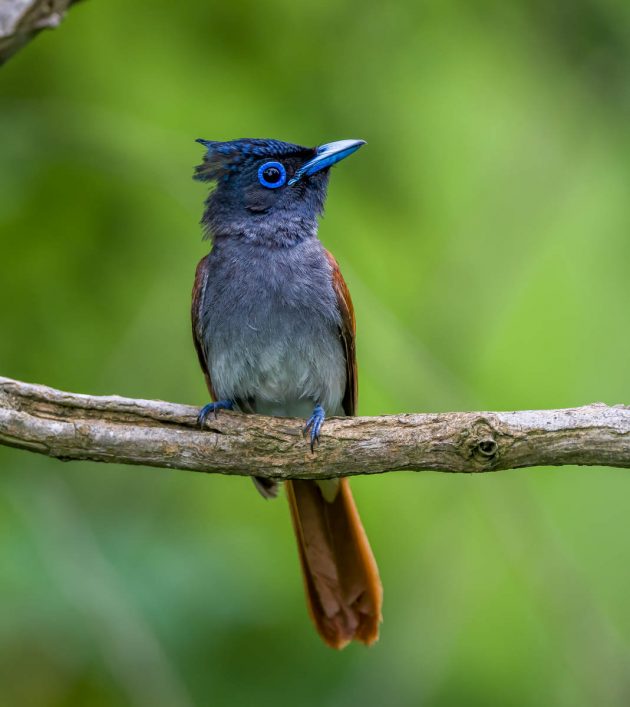
The Japanese Paradise Flycatcher looks rather similar but has a slightly different vocalization (I always wanted to say that! It really makes me sound like an expert, doesn’t it?)
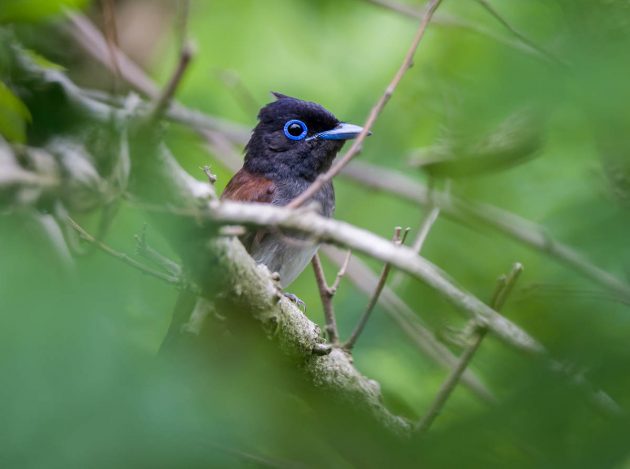
Unfortunately, it seems I missed most of the other colorful flycatchers for this season. What was left was an Asian Brown Flycatcher.
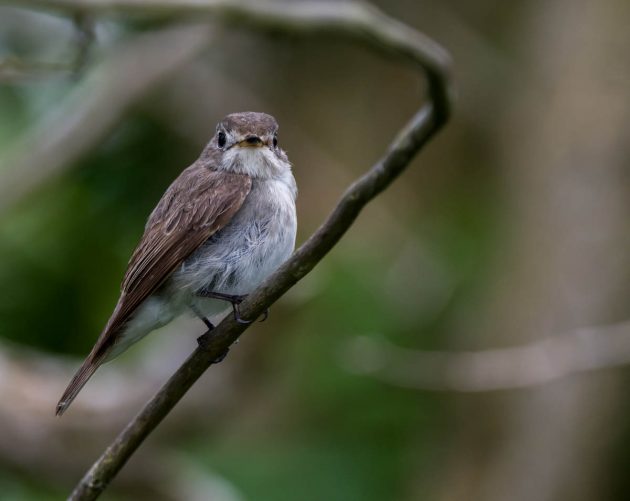
If you are interested in a remarkably boring and pointless discussion of the correct name of this bird, there is a paper for you: “Correcting the ‘correct’ name for the Asian Brown Flycatcher (Aves: Passeriformes, Muscicapidae, Muscicapa)”. Me, I would prefer an appointment with my dentist.
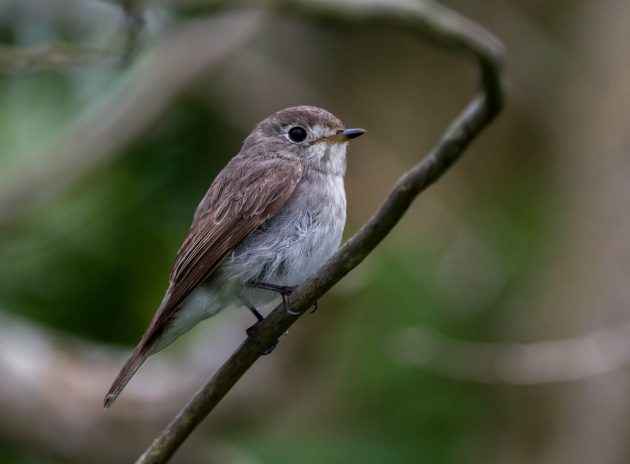
The Grey-Streaked Flycatcher looks only marginally more interesting, and while the Latin species name griseisticta sounds vaguely mysterious, it only means grey-spotted.
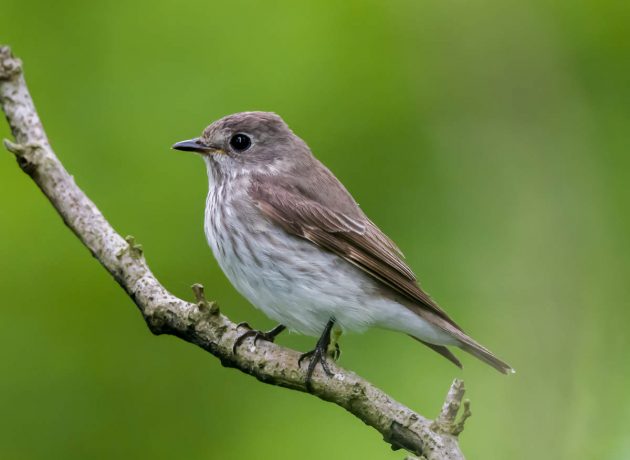
Theoretically, the Narcissus Flycatcher (if that is what my photos below show) should look more interesting – unfortunately, only the male is bright yellow. The rather drab-looking female can only look colorful by grabbing some colorful insects. Accessorizing for birds.
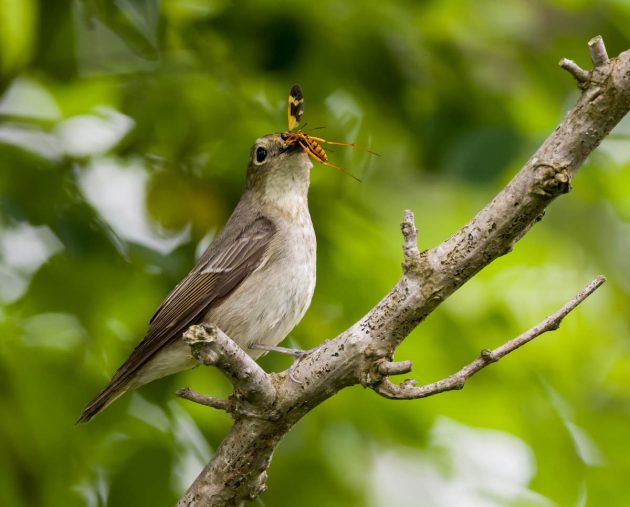
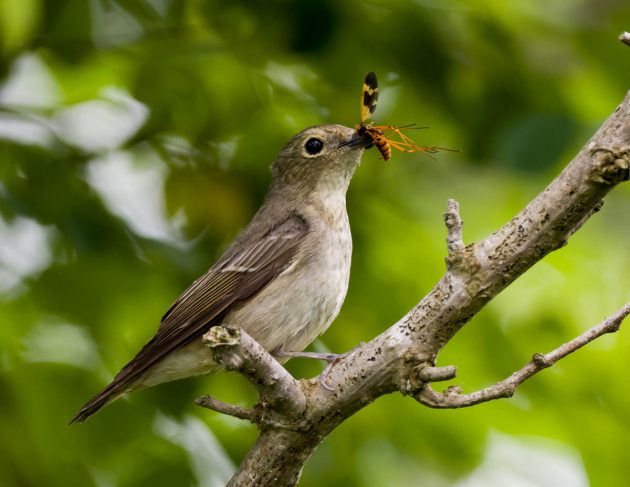
Barn Swallows are a bit unhappy with their image as restless aerial hunters and would like to gain a more stately and dignified profile. They patiently sat for my photos in order to achieve this.
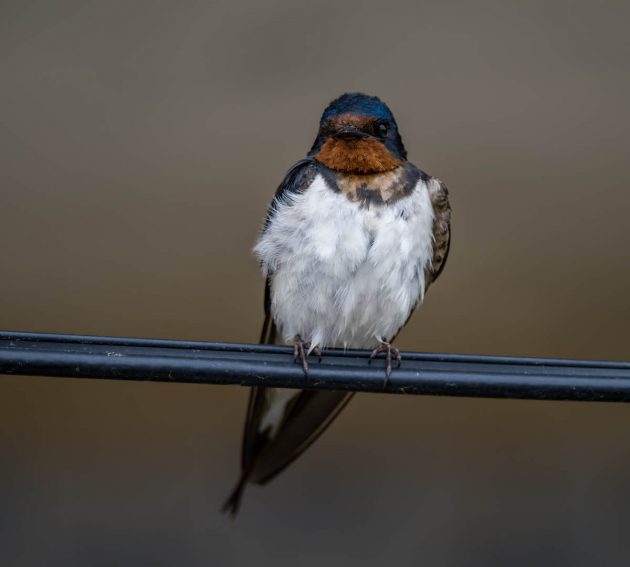
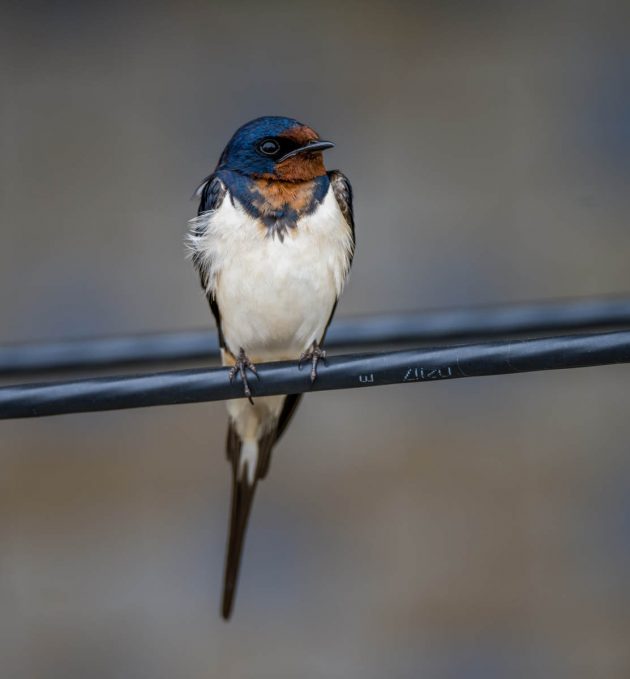
When writing posts like this one, I am always looking for bits and interesting information. So, finding a paper titled A Record of Peculiar Food Finding Habit of Black Drongo Dicrurus adsimilis (Bechstein) in Urban Areas, I was naturally attracted to it like the proverbial moth to a streetlight. It turns out the paper describes exactly that – Black Drongos turning to nocturnal feeding at a streetlight, benefiting from the attracted insects.
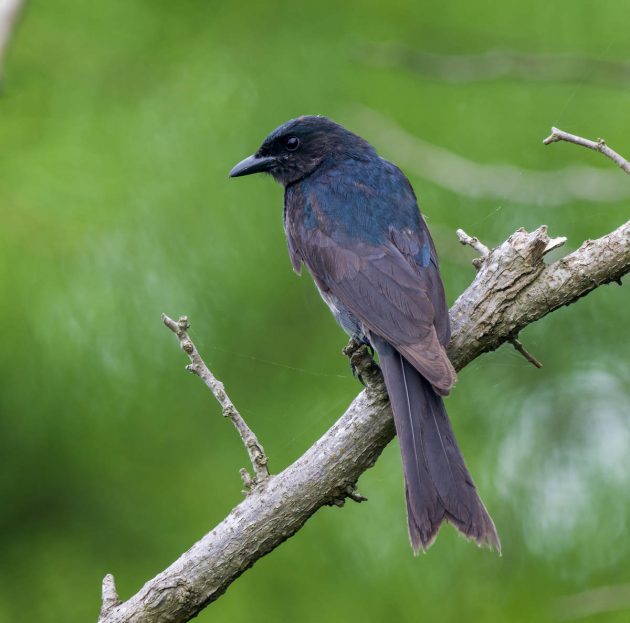
Another – much rarer – drongo at Nanhui is the Ashy Drongo.
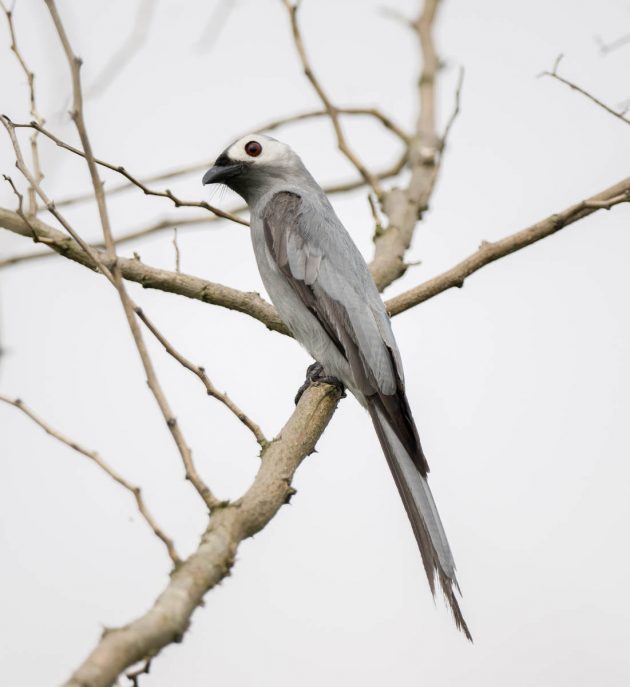
An Ashy Drongo apparently spends approximately 71% of its time scanning (what non-scientists would probably call looking around), 9% eating (less than a typical Chinese human but much more than me), calling 7%, flying 7%, and 6% preening.
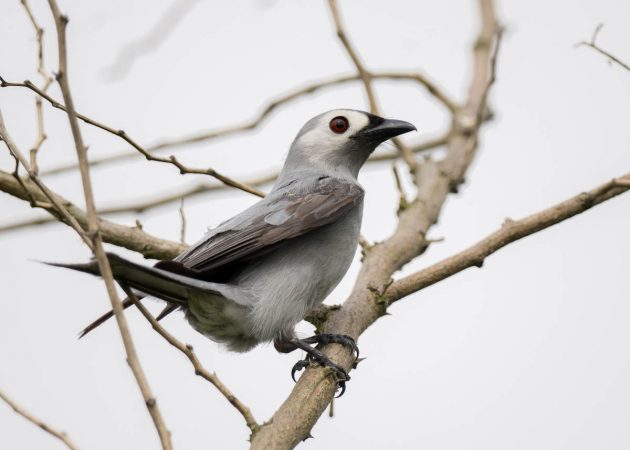
The Hair-crested Drongo is a bit more common here. It has an interesting behavior of dismantling nests after the young have fledged:
“Of the 13 nests that fledged young, 12 were dismantled by the adults that built them after the young fledged. … Nest dismantling by the Hair-crested Drongo may be an adaptive behavior to increase fitness by reducing risk of future predation and competition for nest sites in the following breeding season” (source).
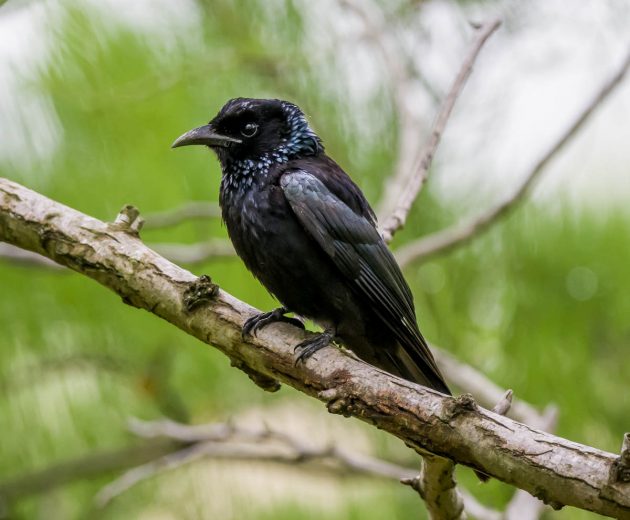
The researchers are quite aware of the differences between humans and birds and thus have completely ignored another explanation for this behavior. Of course, it is quite common for human parents to set fire to their family homes in order to keep the adult children from moving back home, but this is not an issue for drongos.
In an older study by Korean researchers, they offered 4 different types of nest boxes to birds in a variety of locations (the paper even gives details on the exact shape and measurements of each nest box type). While 6 local species utilized these artificial nests, the Chinese Grosbeak did not, preferring its own construction. DIY rules.
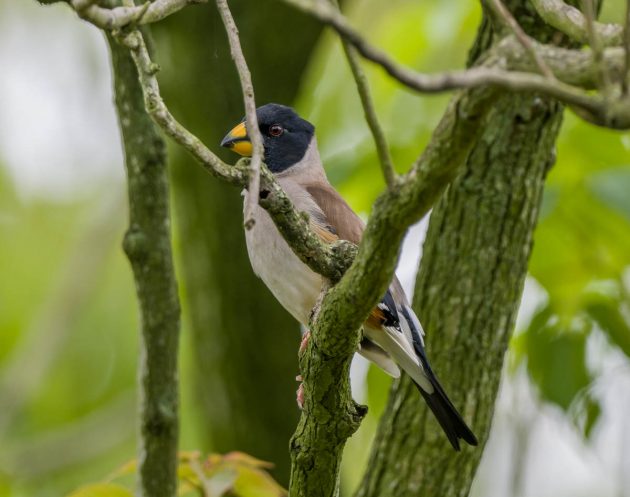
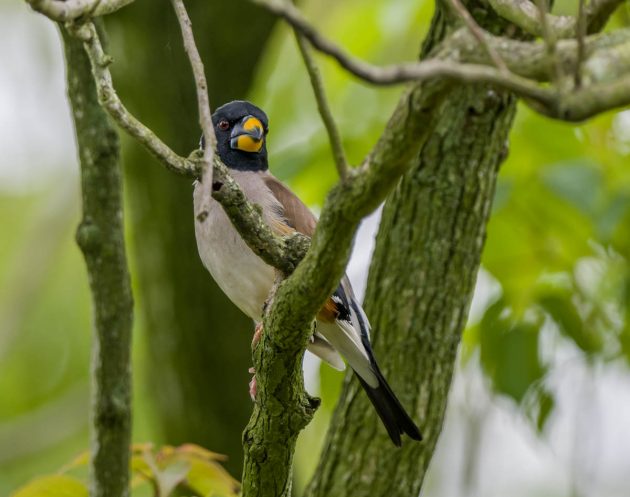
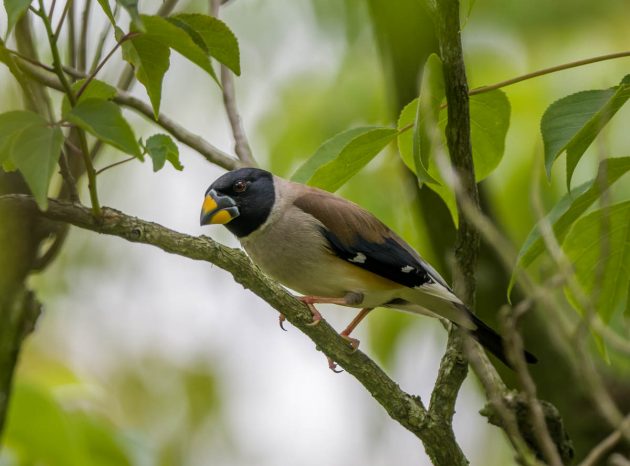
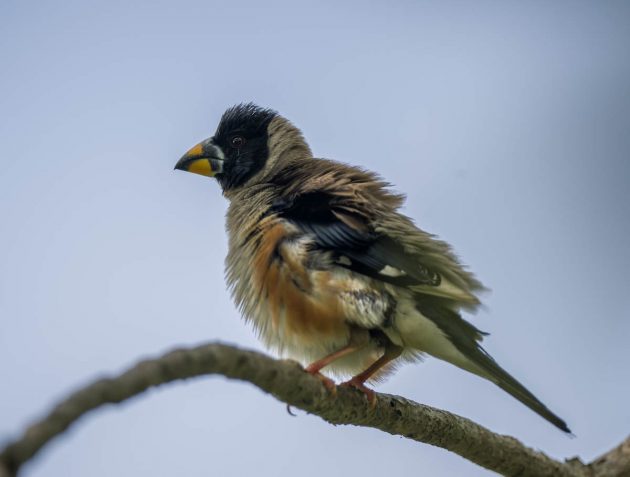
The Lesser Coucal happily admits to being a cuckoo species but wants to highlight the fact that it is not a brood parasite. In a press statement released by the species, it says “We are proud to raise our own chicks and condemn the practice of some of our relatives to dupe other birds into becoming foster parents”.
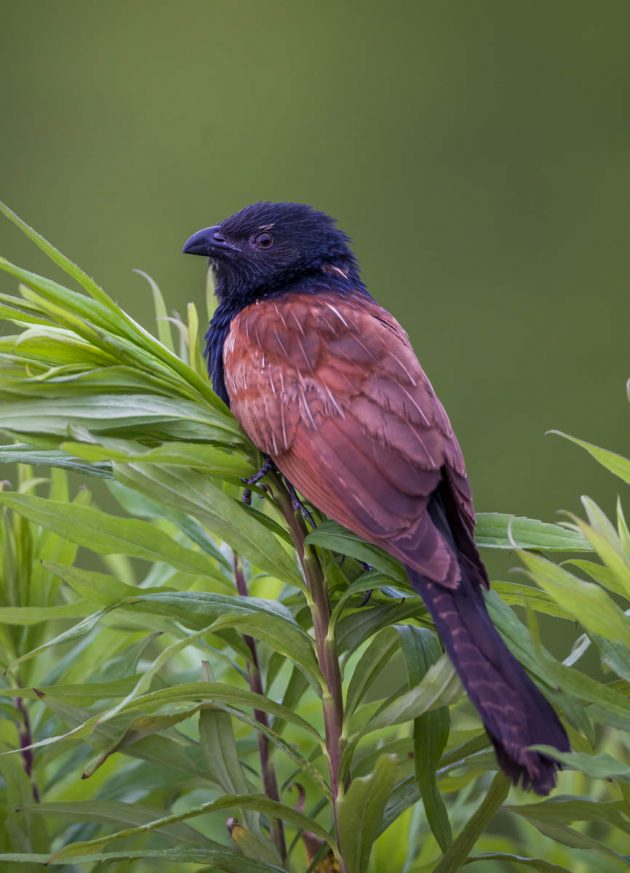
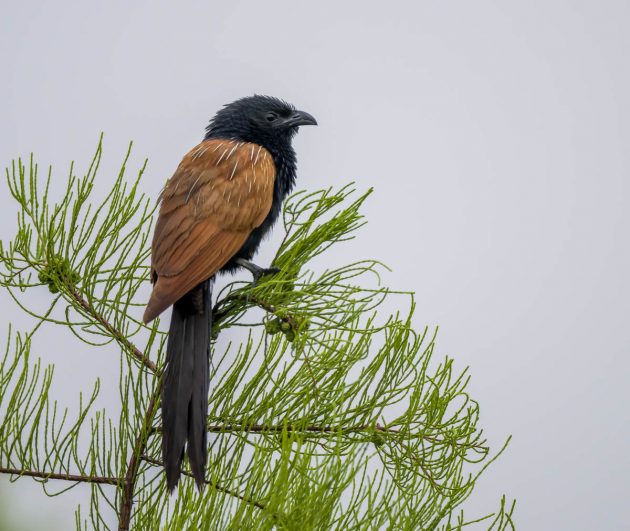
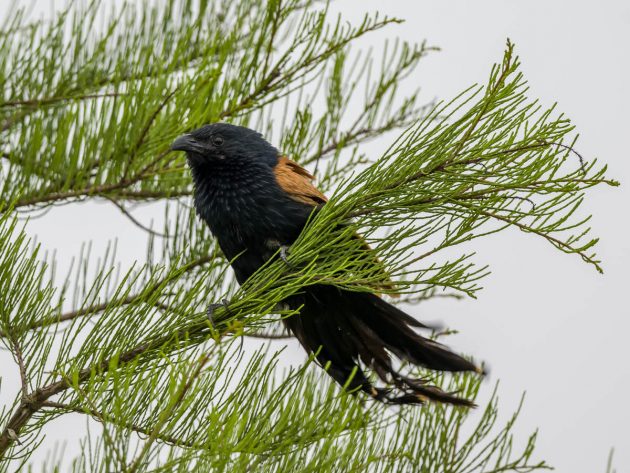
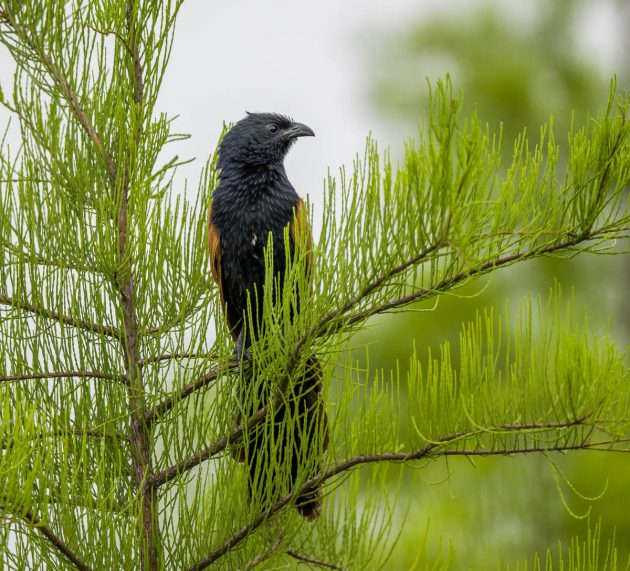
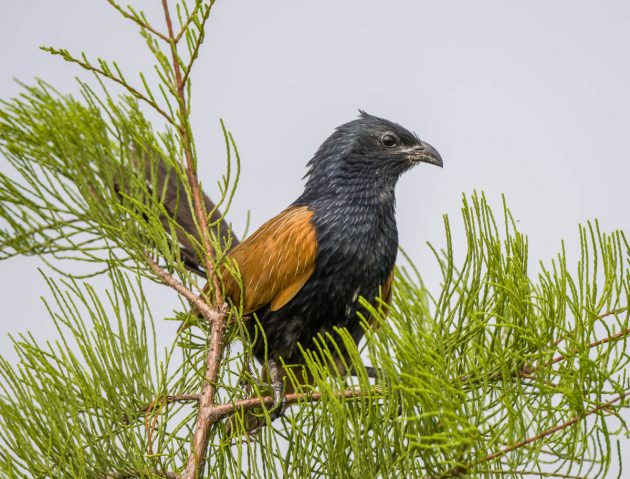
During the lockdown here in my Shanghai apartment complex, the TV advertisements in the elevators were not changed for almost 3 months. So I was severely overexposed to a short ad by an American furniture maker producing La-Z-Boy, a very ugly foldable chair/sofa (“nobody ever went broke underestimating the taste of the American people“). In the ad, the La-Z-Boy is being utilized by a Western-looking couple, with the rather vacuous-looking male part of the couple even playing a few notes on that worst of all musical instruments, the saxophone. In conclusion, an experience that will put me off buying anything from that company ever.
A hard-working Chinese Blackbird almost certainly already incubating its second brood is certainly not a target customer for a La-Z-Boy. These birds have too much taste.
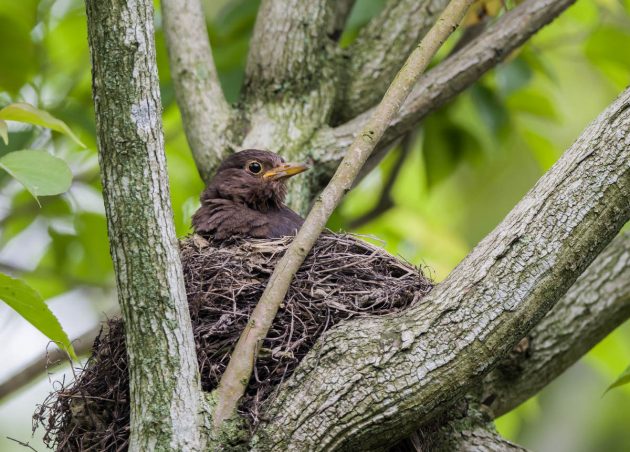
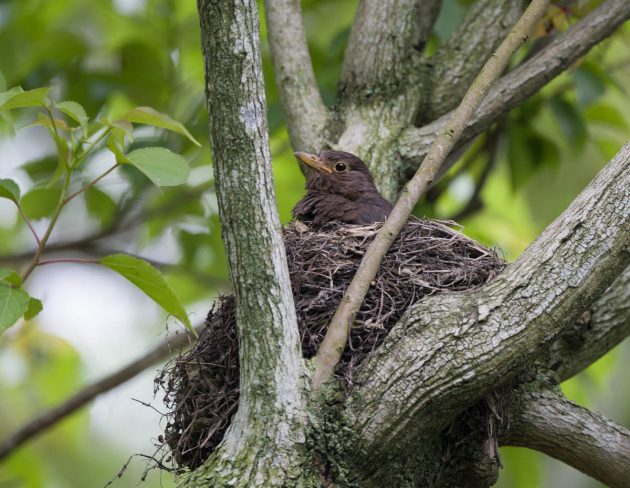
Well, how interesting do you think a Brownish-flanked Bush Warbler would look?
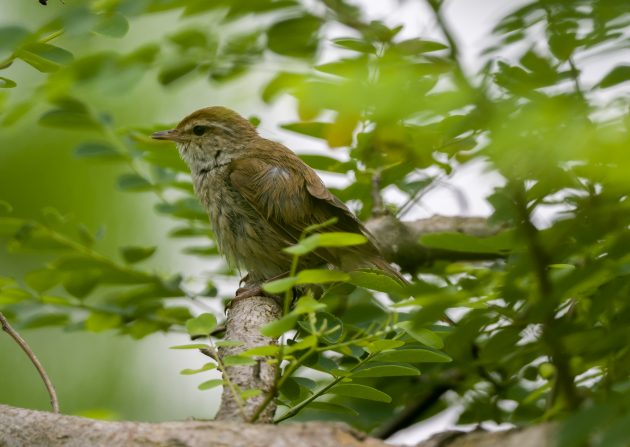
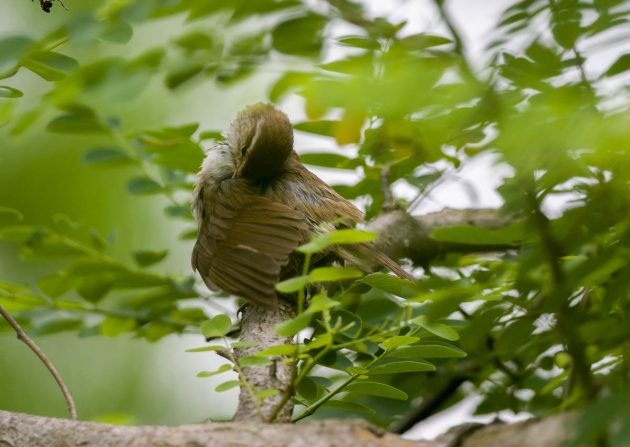
The combination of “brown”, “ish” and “warbler” should have been warning enough. Its call is interesting though.
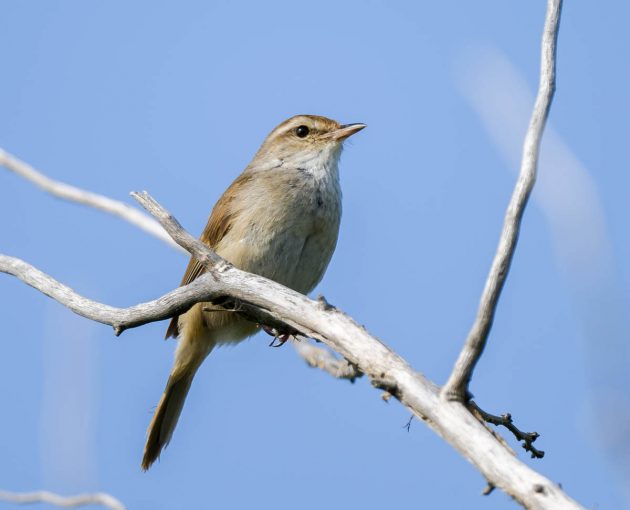
Not being tall myself, I do not fully understand the male fascination with long-legged women. I guess that somewhat limits me from highly appreciating Black-winged Stilts as well.
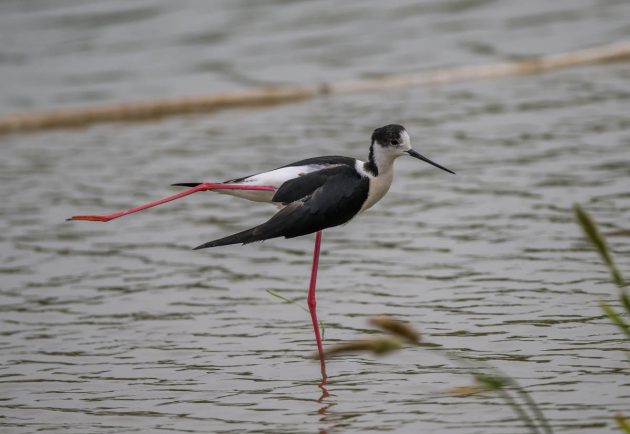
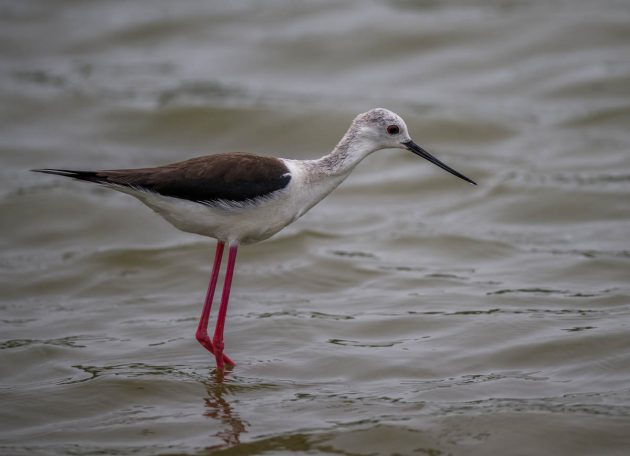
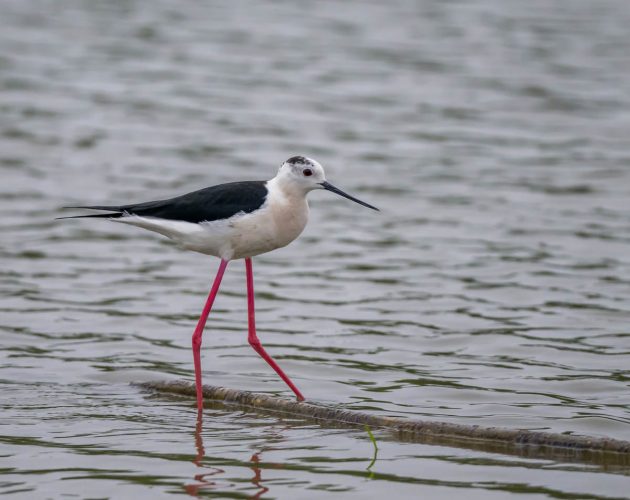
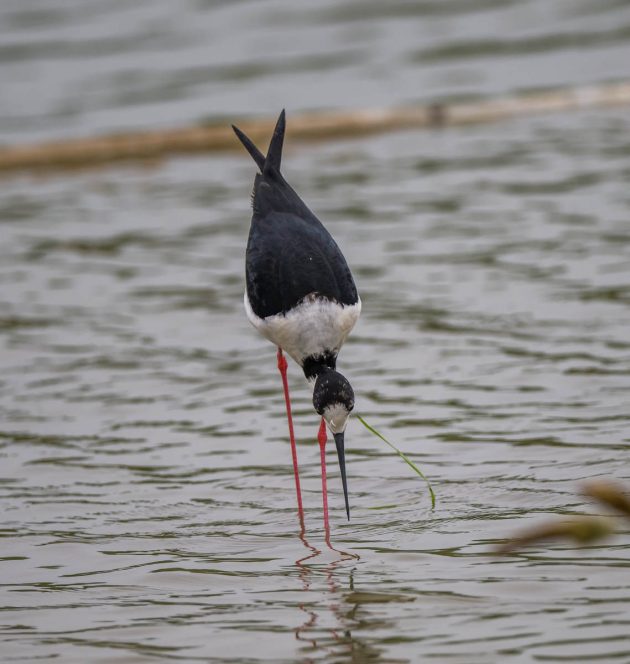
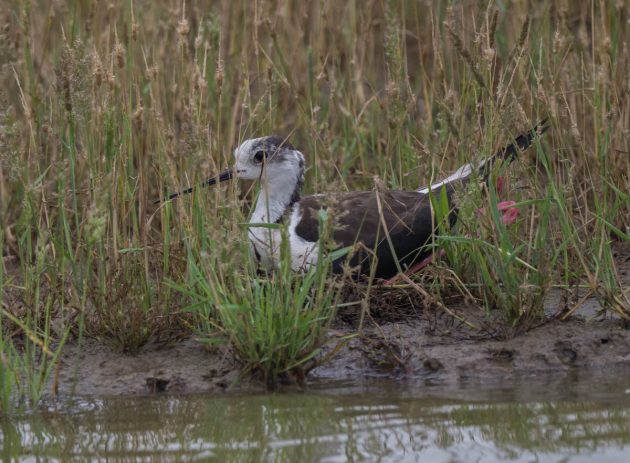
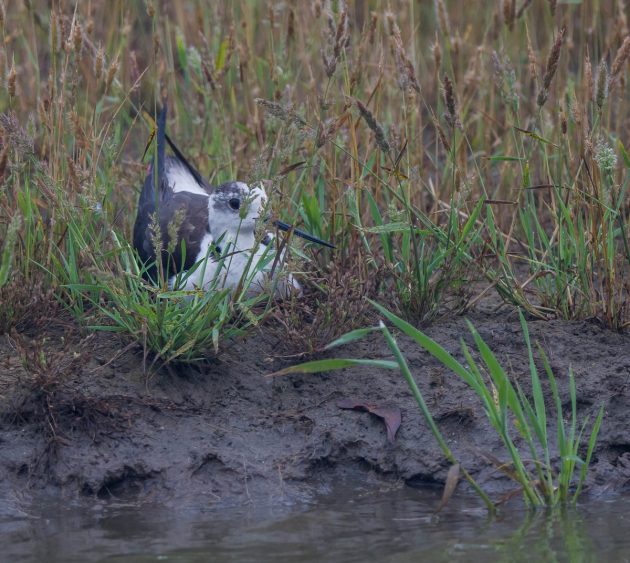
The Little Ringed Plover apparently is a very trendy little bird with a strong commitment to sustainability. Rather than accepting the CO2 emissions resulting from building a new nest scrape, it reuses those of other birds (“Inter-specific nest scrape reuse in waders: Little Ringed Plovers taking over the nest scrapes of Northern Lapwings”).
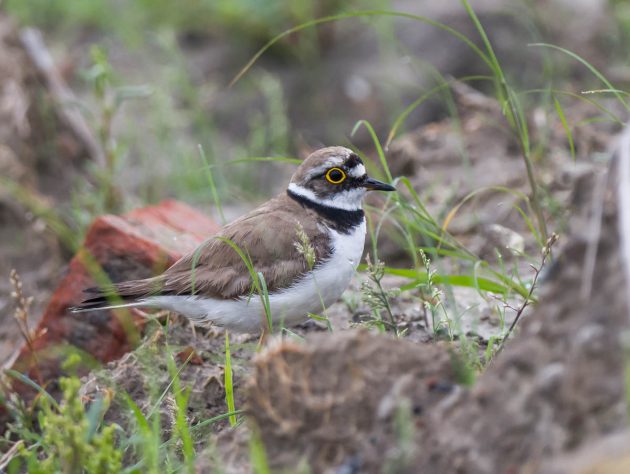
When there are no animals around to sit on, Cattle Egrets sometimes sit on trees, even though they frequently bitch about the trees’ low speed and inability to stir up insects.
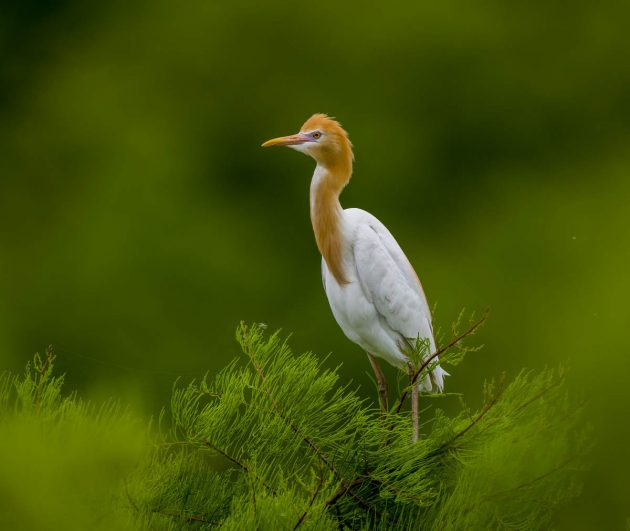
But the alternative of walking on your own feet is not very appealing either.
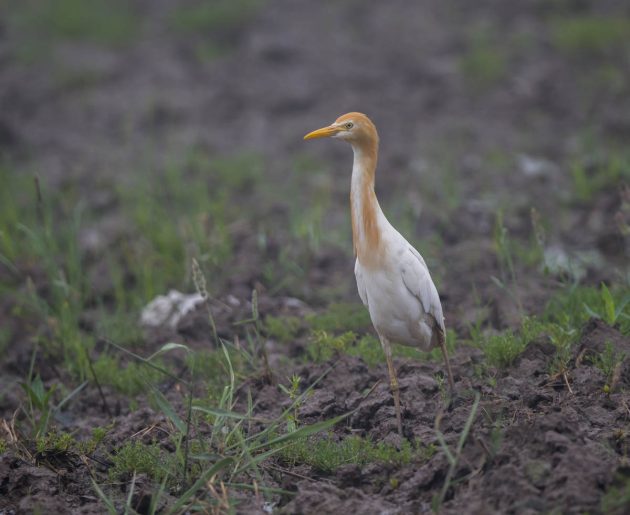
It is sometimes necessary to find food though.
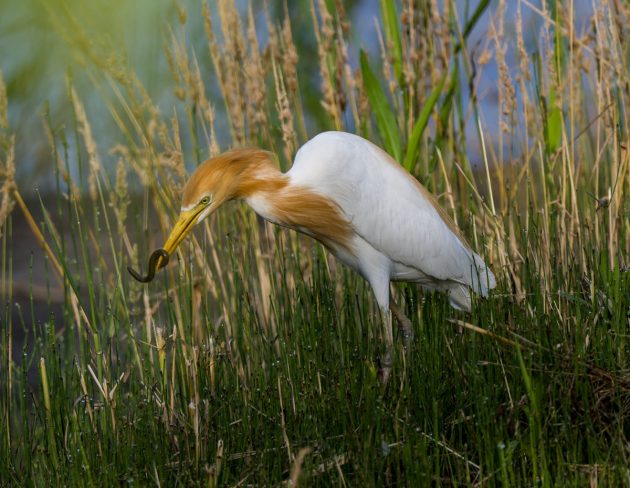
When Cattle Egrets go to the local discotheque, they tend to overdo their makeup a bit.
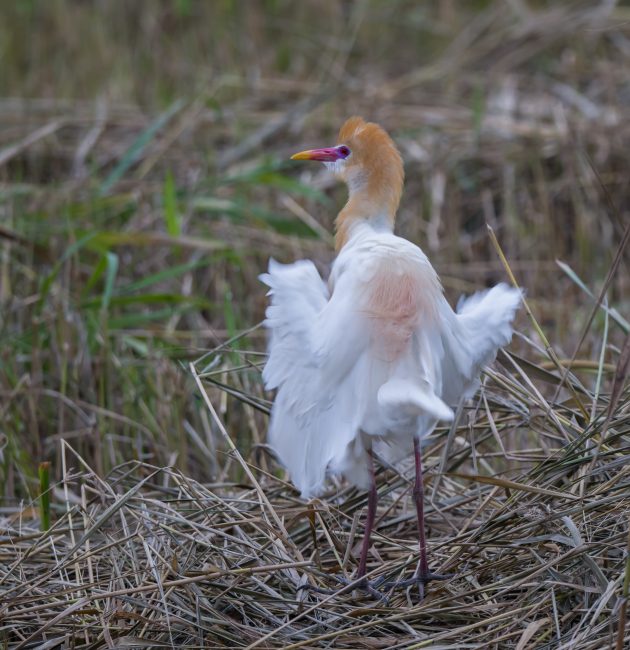
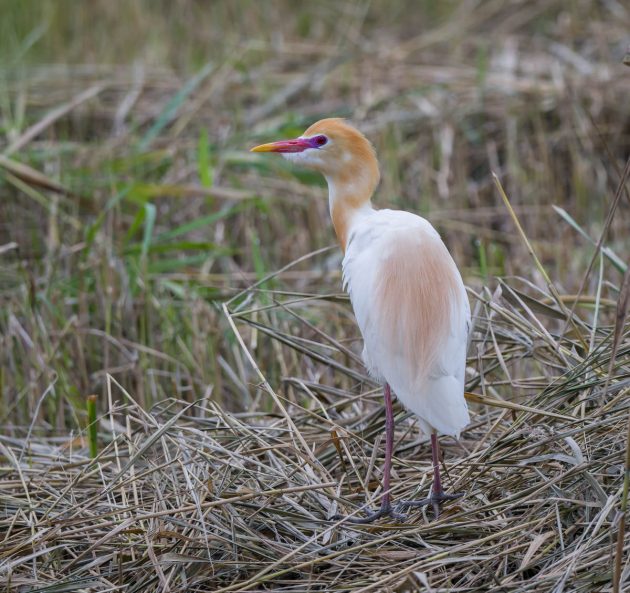
If you are looking for a use of a cardboard box, one of the more interesting ideas is to use it to house an abandoned juvenile Striated Heron. There is a nice description of the process until the release of the bird into the wild here, with photos. Though (as the report also says) it is usually better to just put juvenile birds back into the nest.
It is even better to see adult Striated Herons in the wild, at Nanhui.
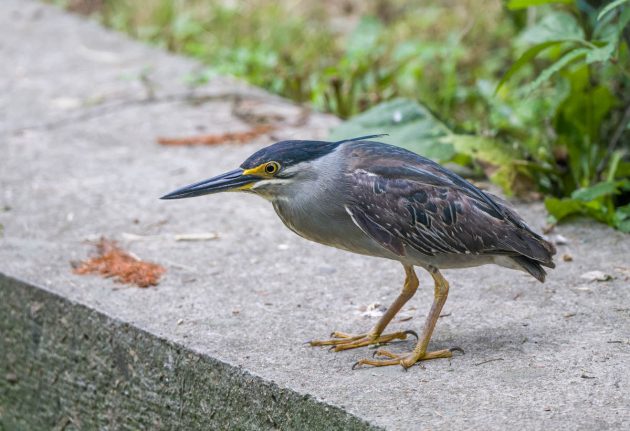
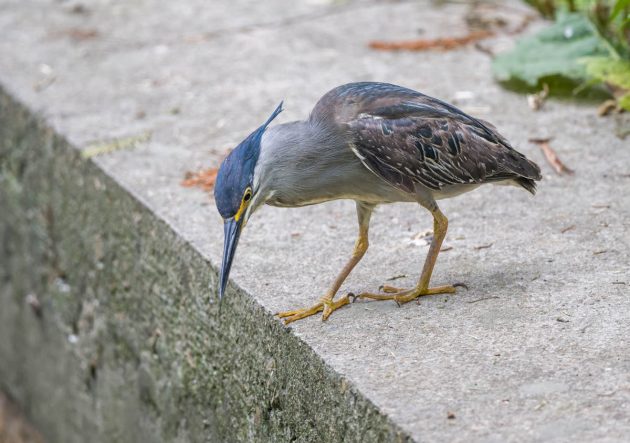
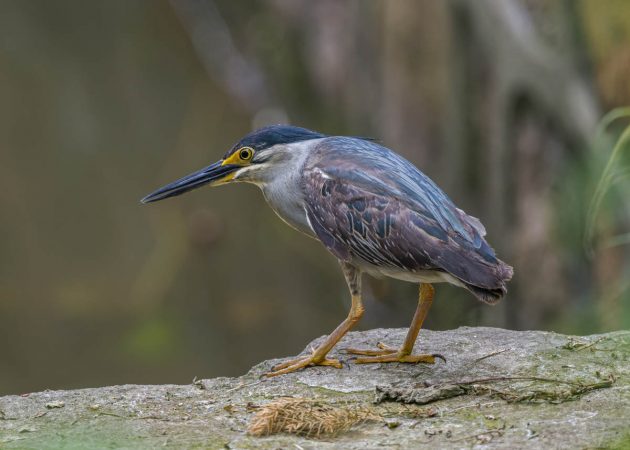
If you prefer a somewhat similar-looking but bigger heron, maybe the Black-crowned Night Heron is the bird for you. Evolution is big on customer service and never forgets that you have a choice.
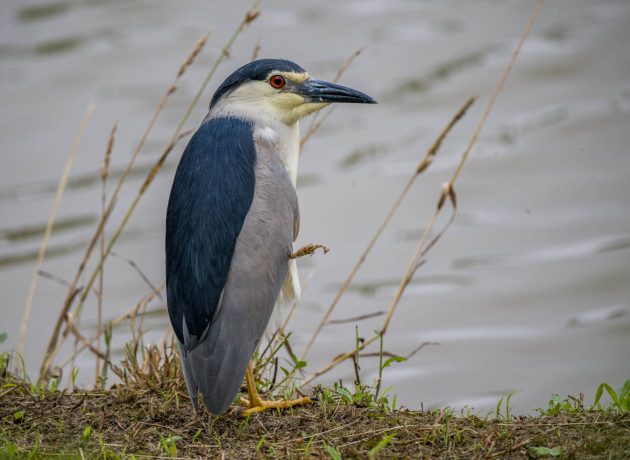

This Little Egret is only included because the bird in the photo is having a really bad hair day.
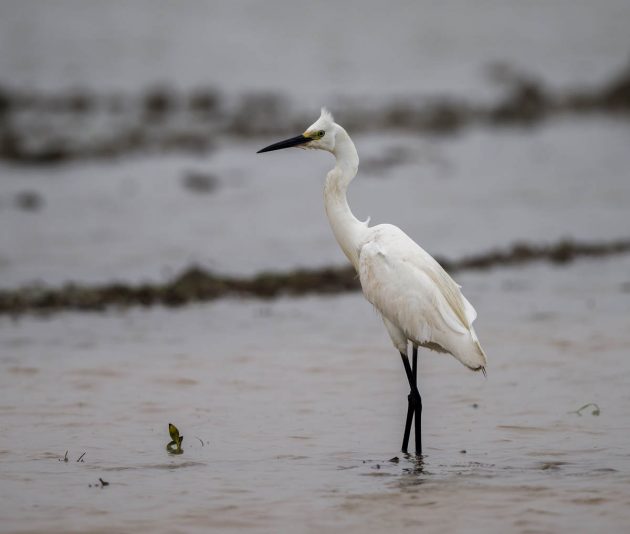
And the Grey Heron is just added for the sake of completeness.
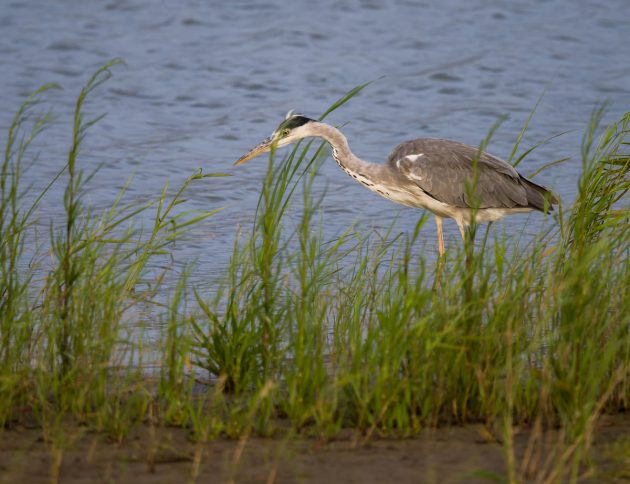
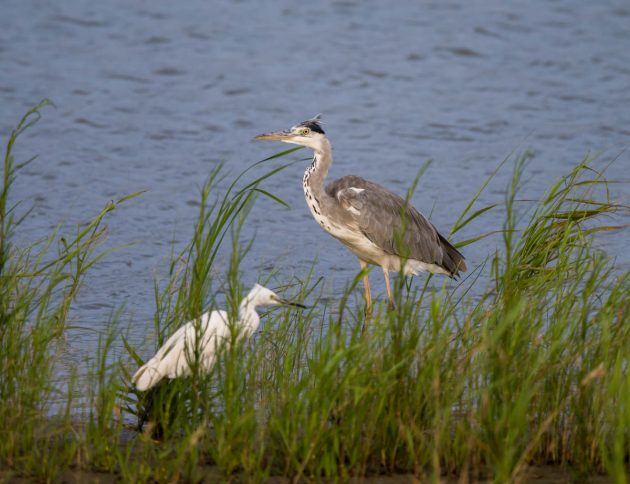
Juvenile Long-tailed Shrikes look a bit crappy, like being made of badly recycled materials.
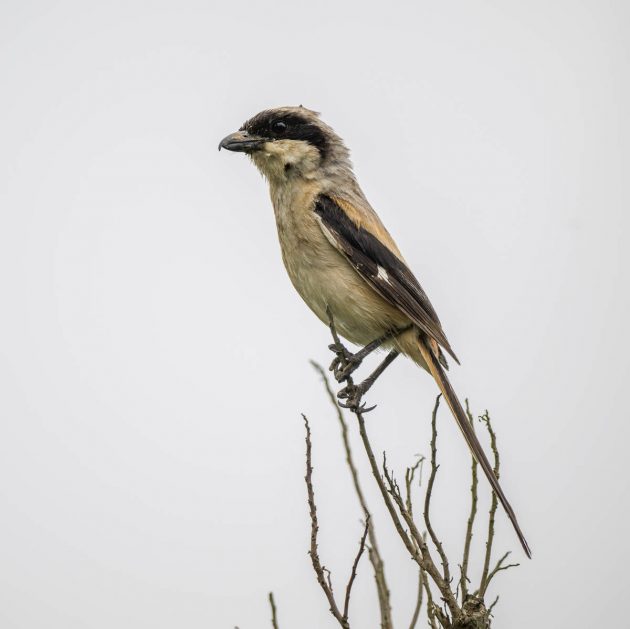
And I am not sure they already fully understand what is edible and what is not …
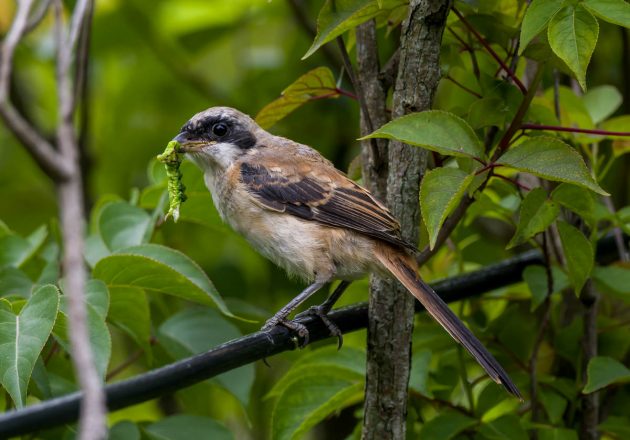
… nor how to eat it …
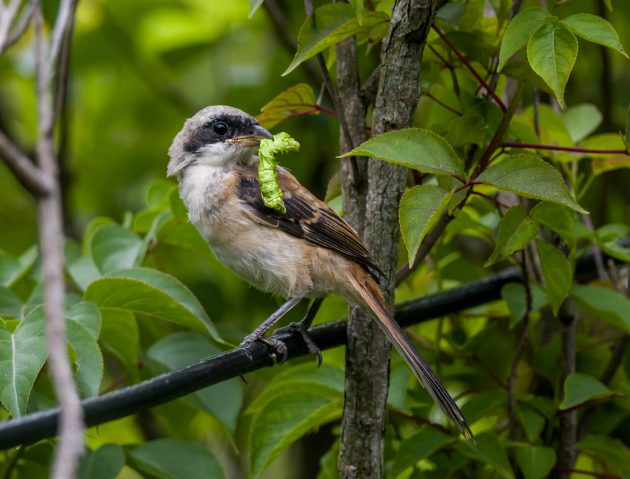
… particularly when chopsticks are not available.
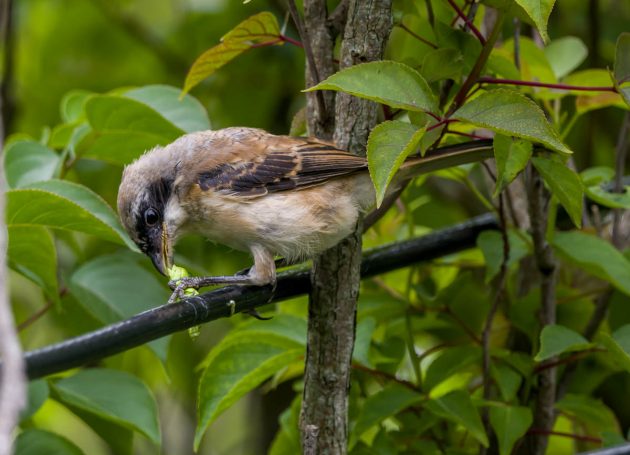
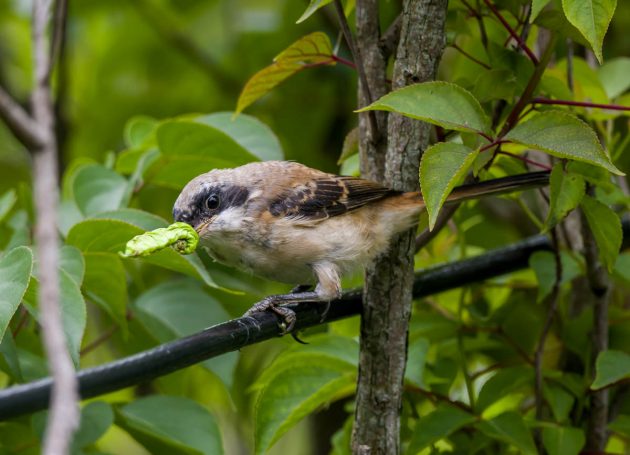
In Singapore, a Tiger Shrike was observed casting a pellet after eating a large scarab beetle. This behavior is described in a paper covering pellet casting by many species in Singapore, including many non-owls. The paper also gives a good rationale why this is rarely reported:
“Pellet-casting of non-raptorial birds was, until recently, not reported by local birdwatchers. … Stalking a bird after it has eaten and waiting for it to regurgitate a pellet takes time and patience. Many birdwatchers seem satisfied merely in the identification of birds.”
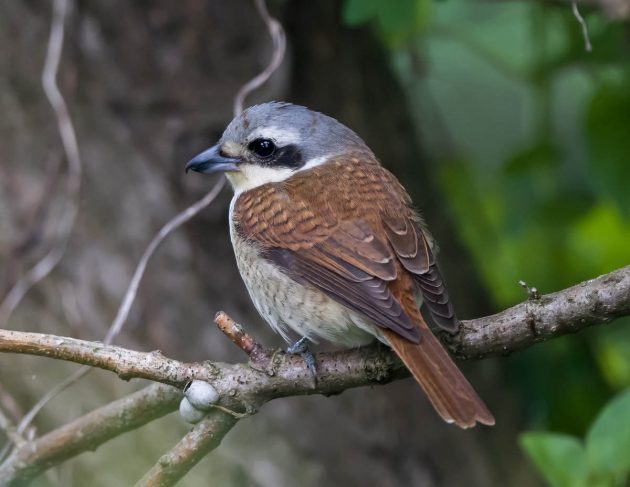
It is a bit similar with my cats – I like to watch them eat but rarely wait until they throw up.
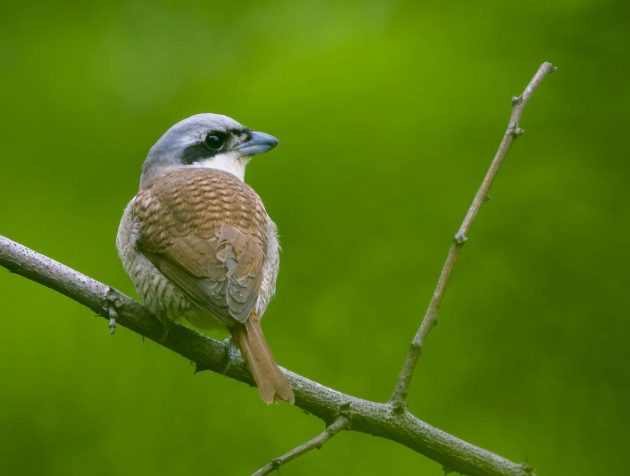
Maybe I could have watched pellet casting in this Brown Shrike, had I been more patient.
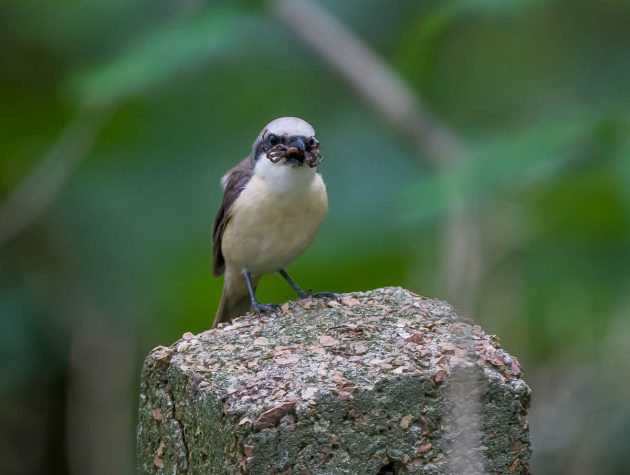
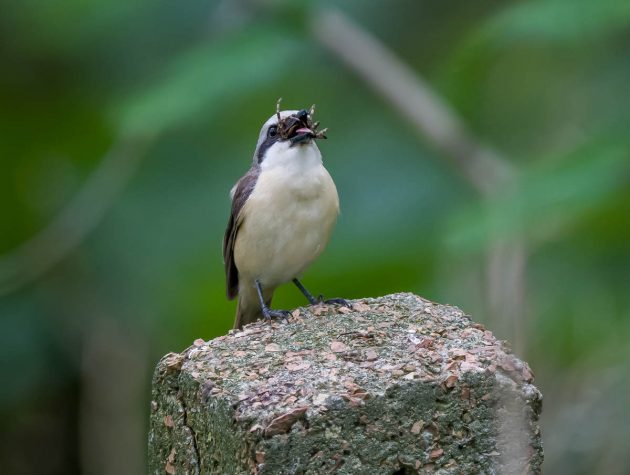
If as a Red Collared Dove you are a pessimist, you will agree with the Wikipedia description of your species as “a small pigeon” while as an optimist bird, you may prefer eBay calling you “medium-sized dove”. While there apparently is no scientific difference between doves and pigeons, generally doves are smaller while pigeons are the larger species (source).
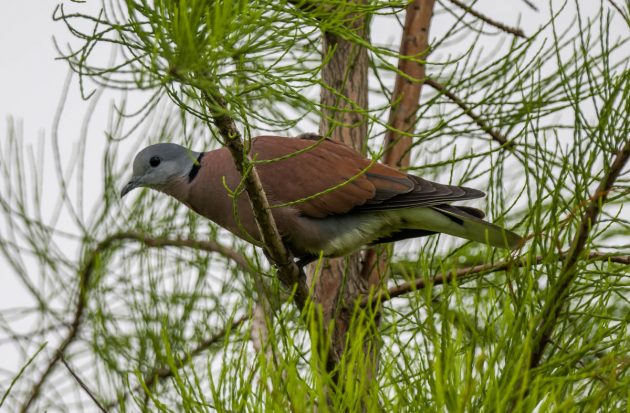
In New Zealand, the Spotted Dove is an introduced species. There, it seems to benefit more from supplementary feeding than some native species – a potential negative side effect of such feeding could thus be the replacement of local birds (source).
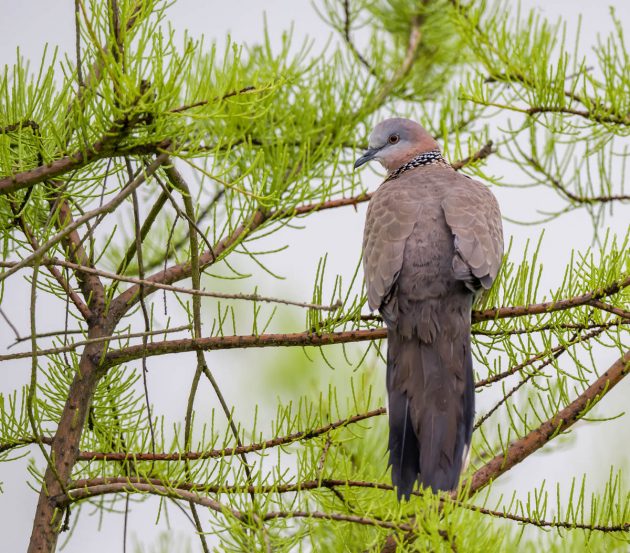
Strangely, I like the messy look of the juvenile bird much better.
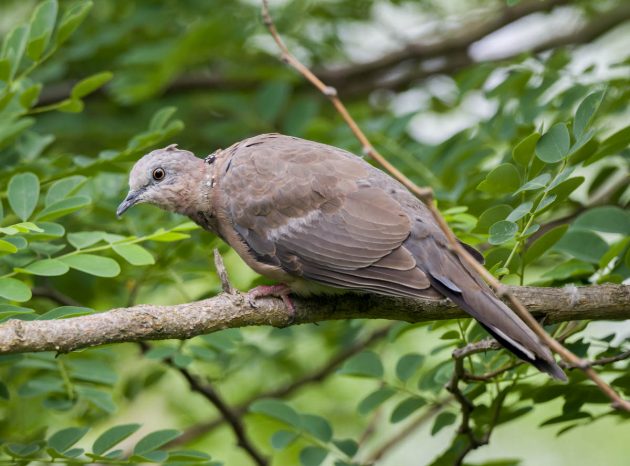
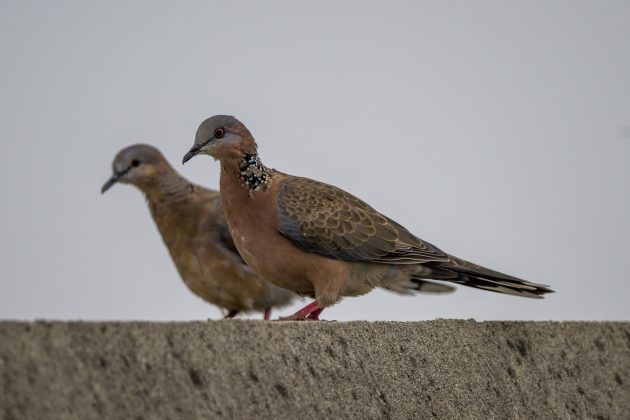
The Brown Crake is not that easy to see in Shanghai even though it is breeding here.
The first two photos are of chicks – they still feed together with their parents.
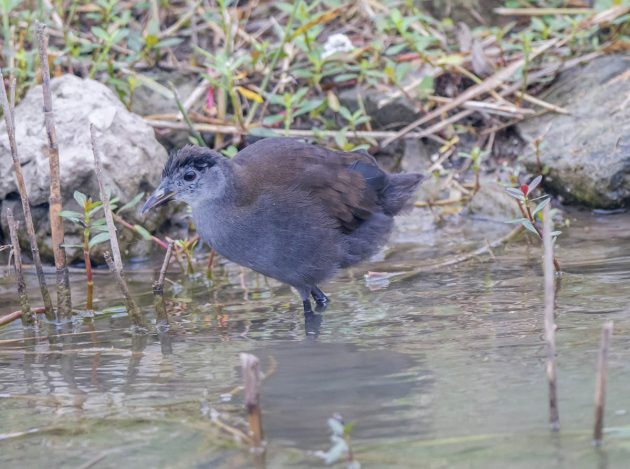
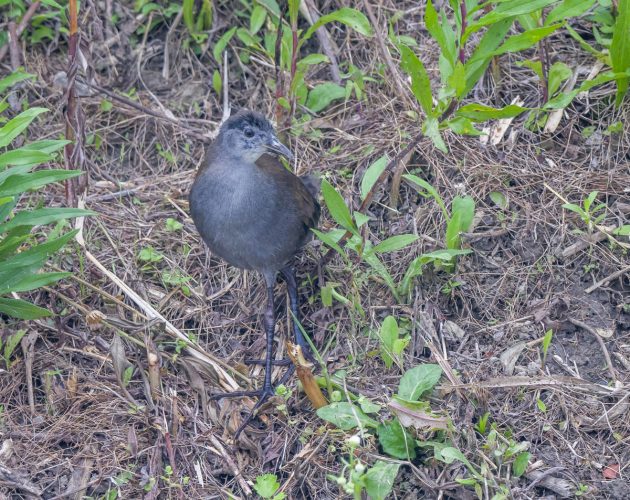
The Latin species name akool is not a misguided and misspelled attempt of the species to appear cool – rather, akool means restless in Hindi (even though the birds did not seem particularly restless to me, but maybe they are in India)
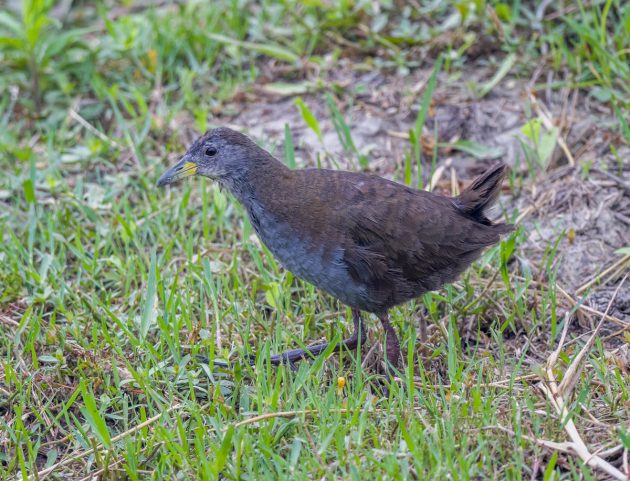
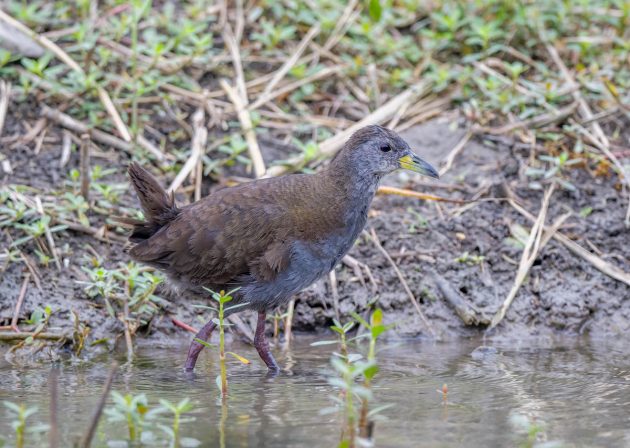
The proud parents together – first silent …
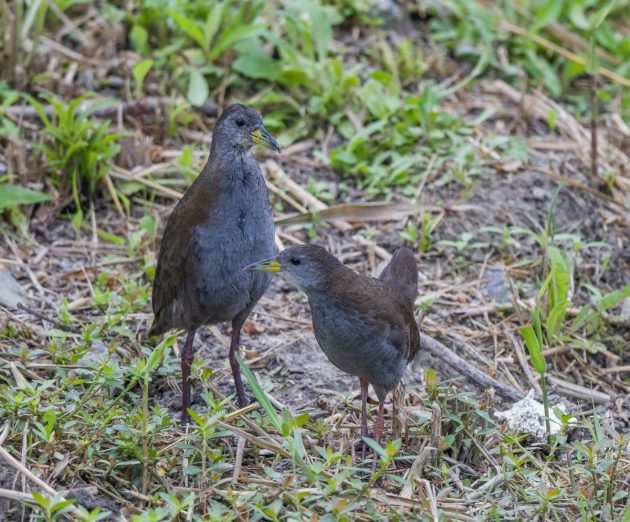
… then crooning together.
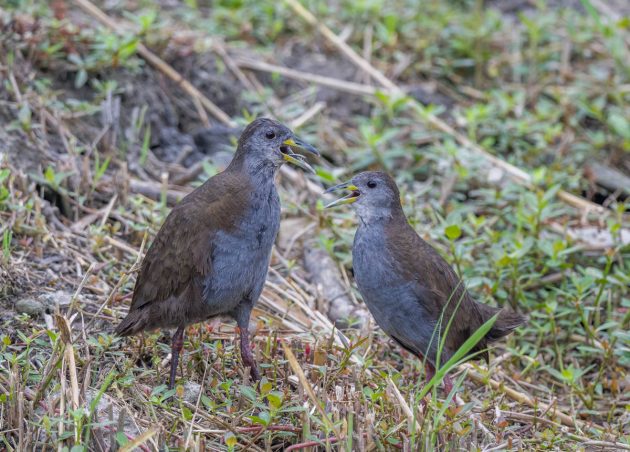
If you do not like the song of your local Plain Prinia, you might consider introducing some invasive plants. Apparently, male birds may change their song depending on the vegetation:
“The invasion of smooth cordgrass Spartina alterniflora in the coastal wetlands of eastern China has drastically altered the vegetation structure and some small passerines have begun to use invaded habitats to breed. … males of plain prinia in invaded habitats sang shorter songs than those in native habitats and had a lower song diversity.” (source)
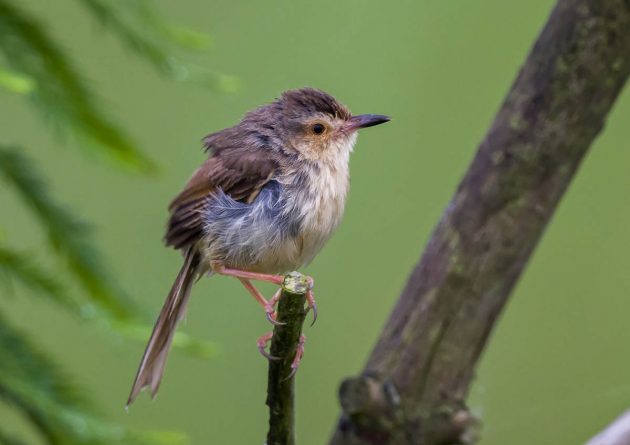
Camouflaging nests is pretty pointless if – like this Common Moorhen – your head is essentially one big red exclamation mark.
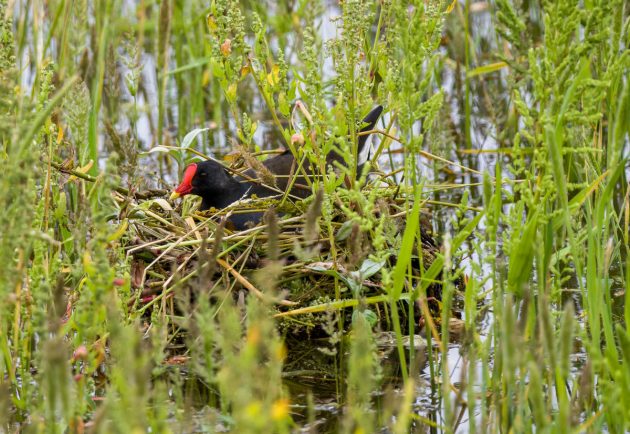
Other moorhens are already a bit further in kicking the species survival bucket further down the line.
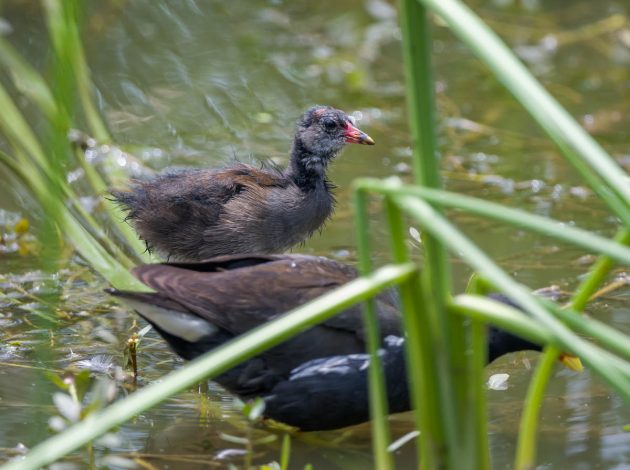
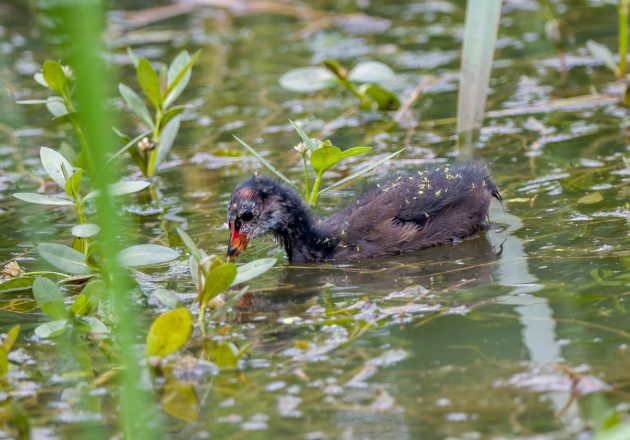
Hallmark cards with a clearly recognizable motive or target occasion (e.g., mothers day) but a slightly flawed photo typically sell at a discount of 30-50%.
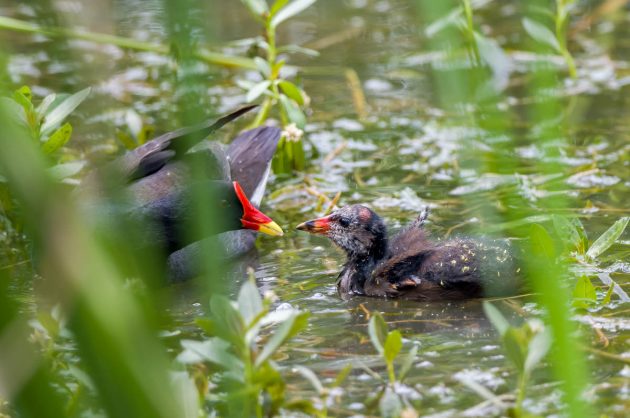
It seems to me that the Black-collared Starling is much more common in Shanghai now than it was a few years ago. Before you know instinctively think of climate change as a reason (followed by thoughts about electric vehicles etc.), keep in mind that it might just be that some members of the species have taken up jobs at the new Tesla factory – it is indeed only a few kilometers away from the plant of nature lover Elon Musk in Nanhui.
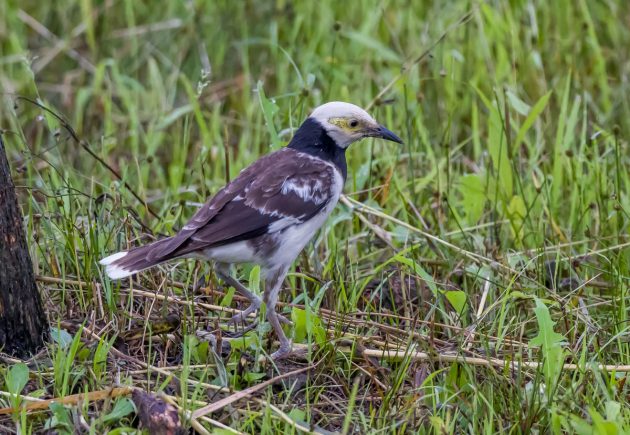
The Red-billed Starling is more common in Shanghai. It also seems to be expanding into Korea (source).
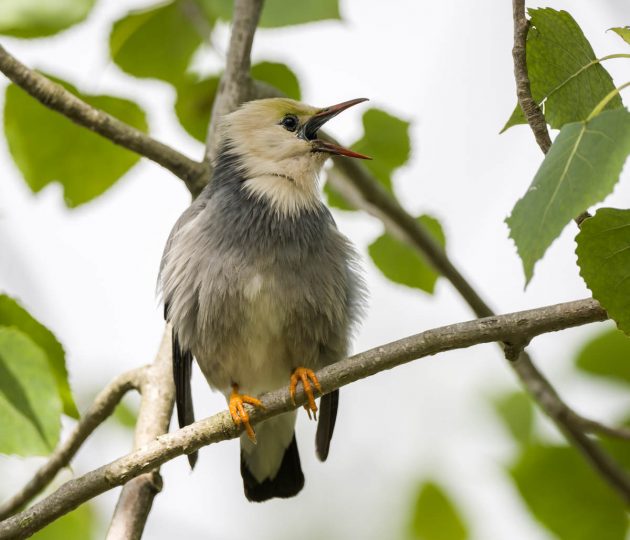
Judging from the behavior of the bird, I think it was a juvenile calling for food – however, a verification based on the HBW was not possible as the only remark in there is “juvenile apparently undescribed”
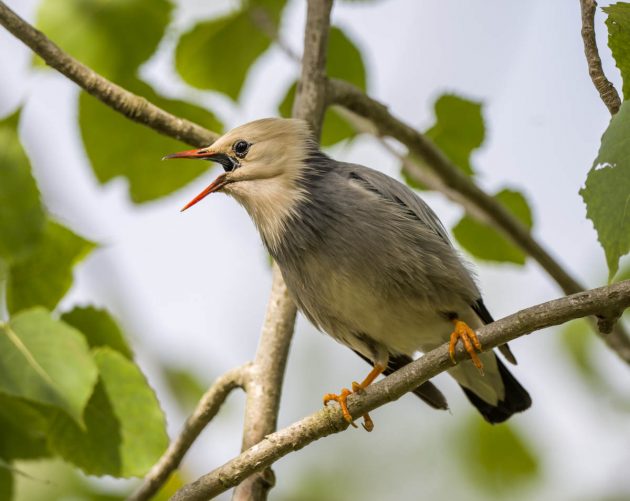
Below should be an adult with much clearer patterns.
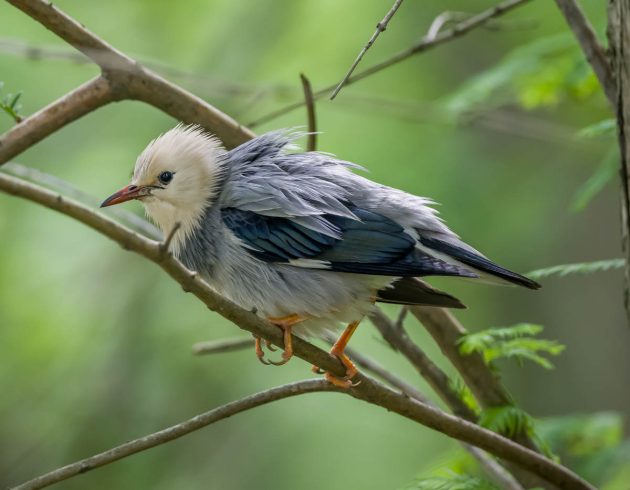
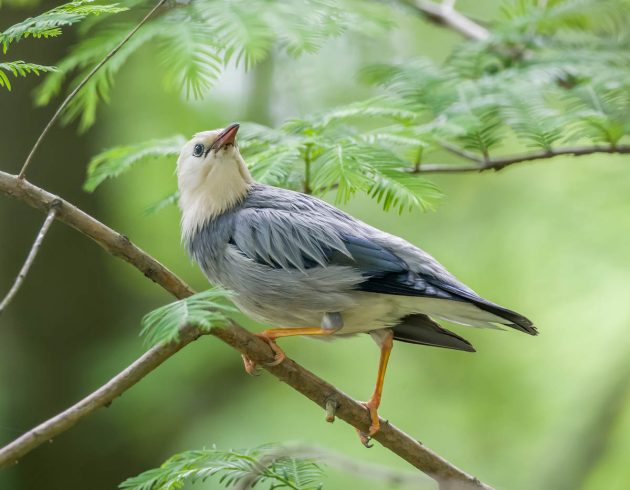
While the Collared Finchbill is quite rare in coastal Shanghai, the last three years I have reliably seen them in summer at the same spot – never more than 20 meters away from the old location. Are these the same birds? Life expectancy of passerines is short … Or maybe their descendants? Or is the spot just so perfect? And where can I get a grant to figure this out?
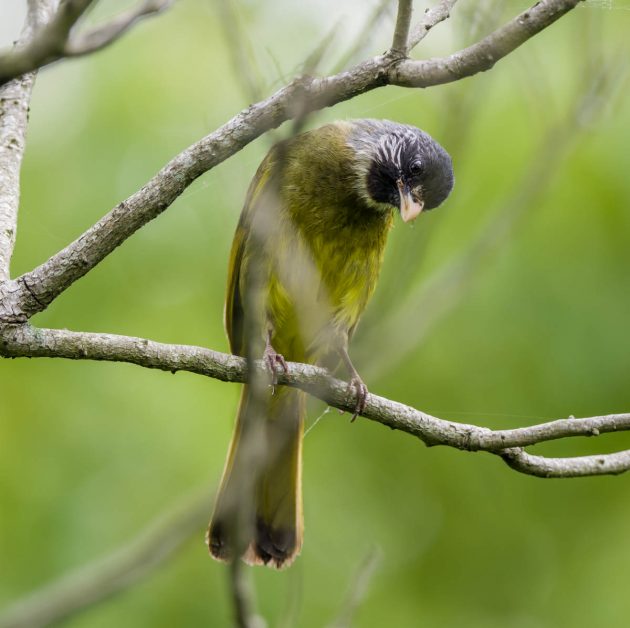
While I am sure the Brown-breasted Bulbul has been seen in Shanghai, the pictures below actually illustrate the first-ever sighting of the bird on eBay. If only birders had groupies …
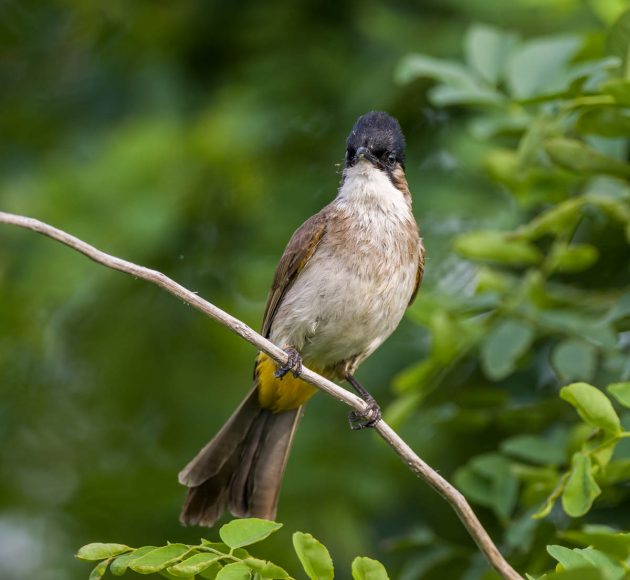
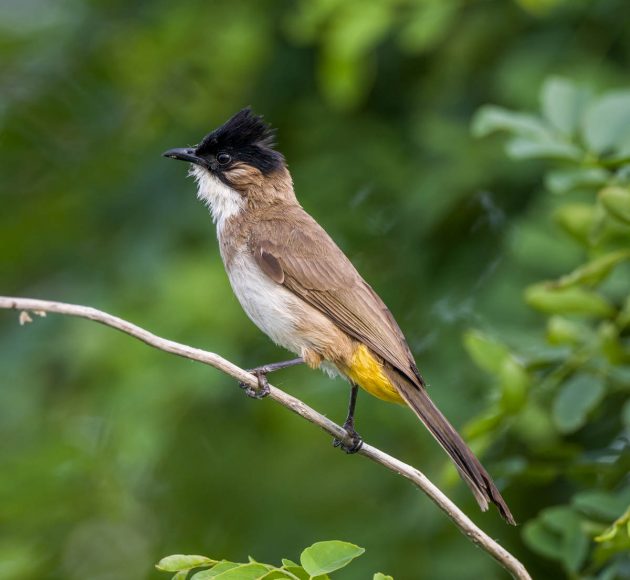
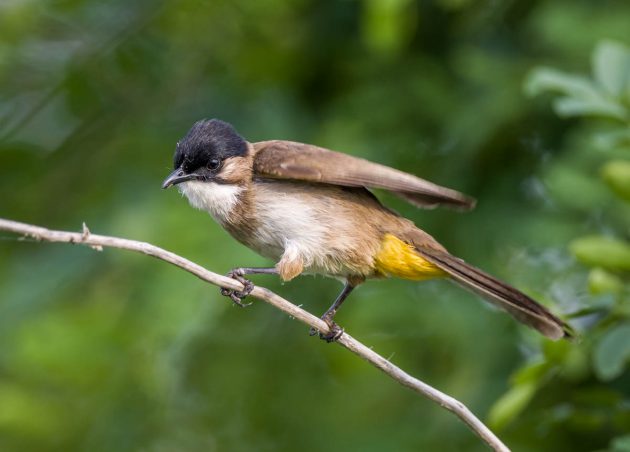
The pair I saw were eventually driven out of the location by the resident Light-vented Bulbuls.
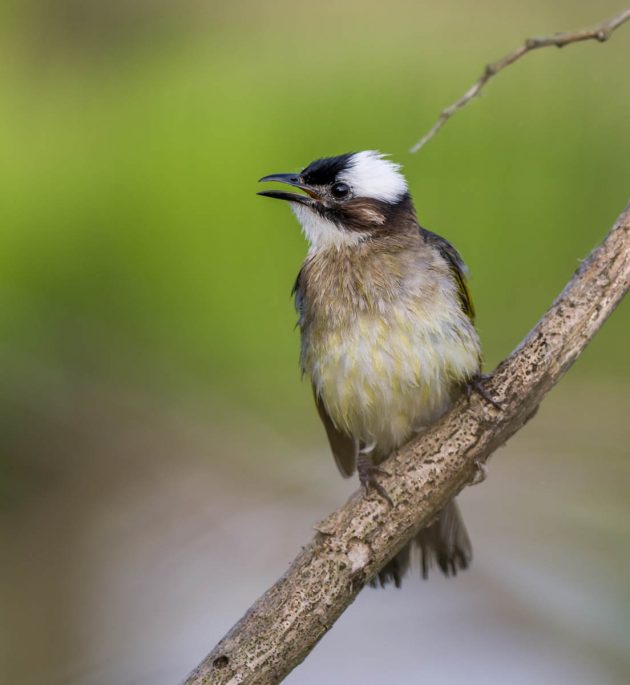
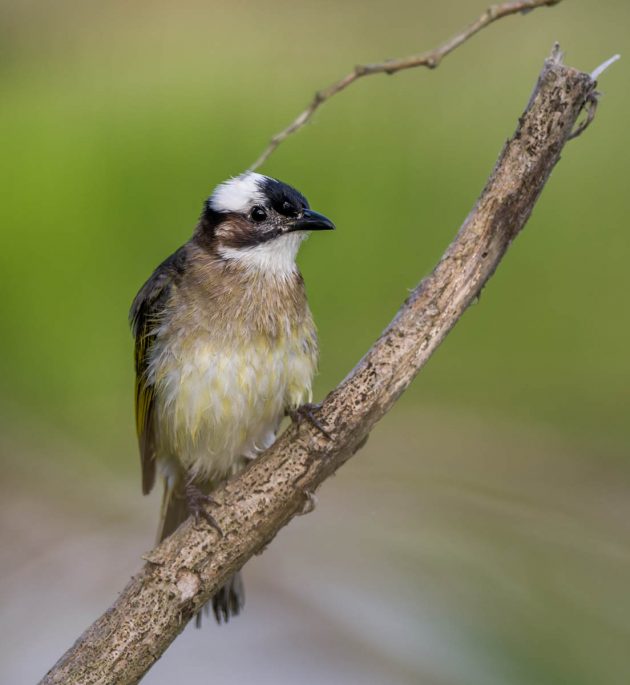
It seems a bit counterintuitive to give the name Black Bulbul to a bird whose most obvious characteristic is its white head. Granted, this is just one race of the species – others are truly black – but still … Not having to explain to your child why this bird is named Black Bulbul is another good reason not to have kids.
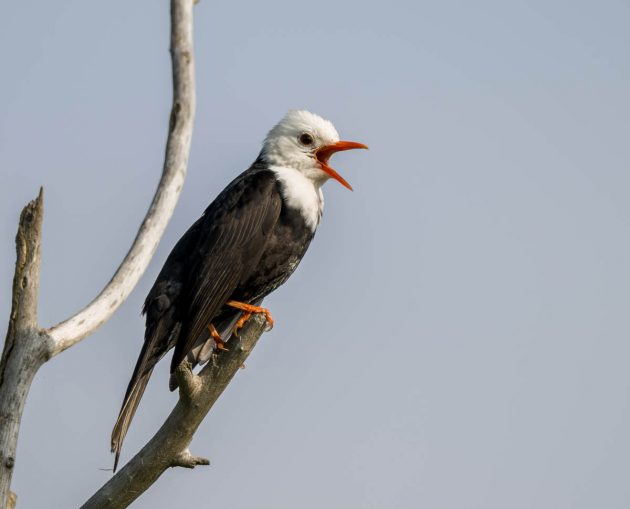
Similarly, Black-winged Cuckooshrike? Maybe ornithology students should be handed a free Pantone color chart to avoid such mistakes in the future.
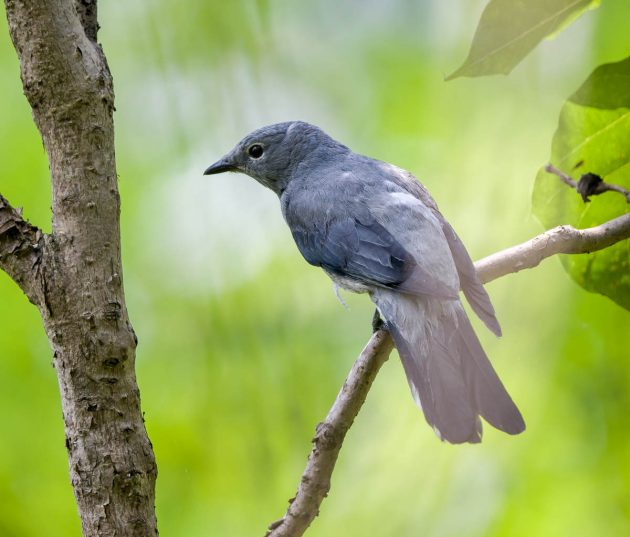
If you see a Black-naped Oriole, you might want to run. In Singapore, a Chinese male “encountered the wild Black-naped Oriole in his backyard and attempted to tame the bird. The bird attacked the patient and caused injury to the eye” (source). If this does not sound scary to you yet, the abstract of the paper starts with the ominous-sounding “To highlight the potential dangers of Black-naped Orioles in urban Singapore”.
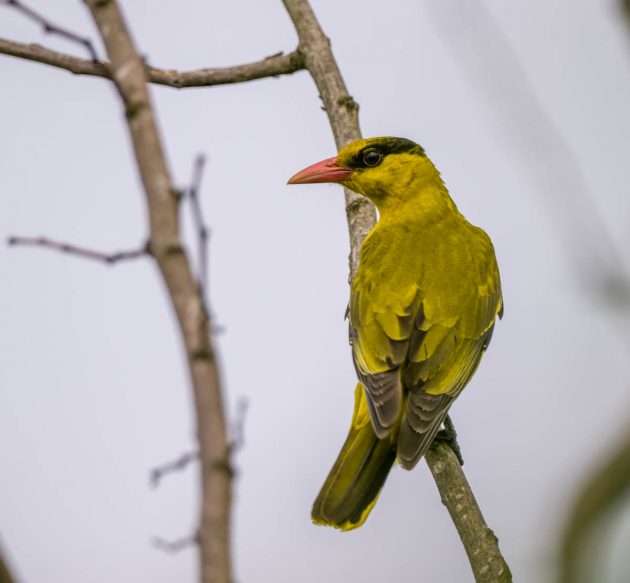
Helpfully, the authors of the study also declare that there were no conflicts of interest, indicating that in this specific case, they had not received any money from the Society for the Defamation of Black-naped Orioles (SDBNO).
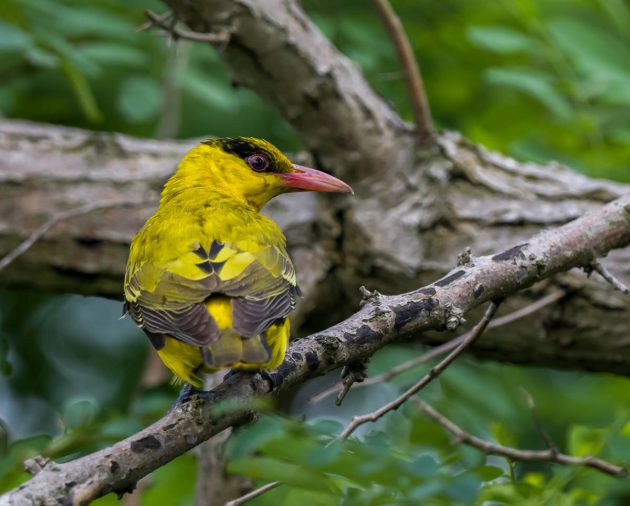
I had also not seen any Common Kingfisher for more than 2 months, a situation that is generally being frowned upon by human rights lawyers.
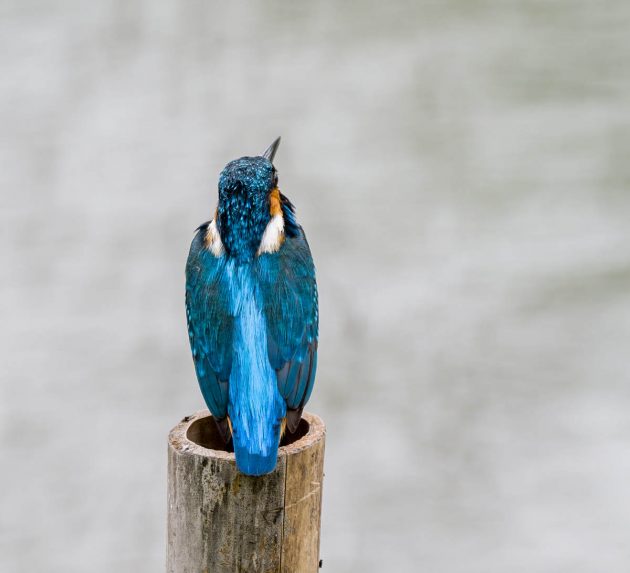
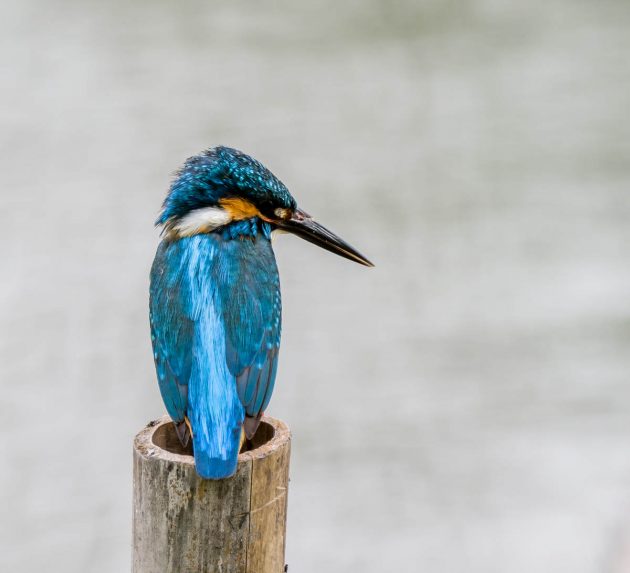
Of course, there is nothing I like better than ending a post with the photo of an anonymous leaf warbler. Arctic? Antarctic? Who cares.
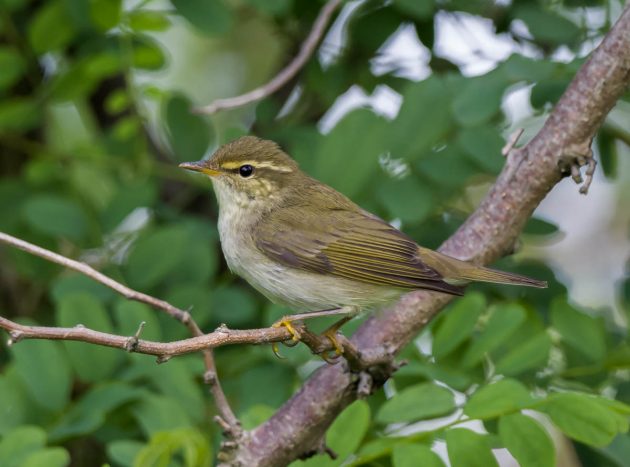
Well, there is something better, I guess – ending the post with a reference to the beginning of the post. “I’m doing this for revenge” sing the Mountain Goats in their most recent song, “Training Montage“. It is very good, though I feel it could be even better without the last 50 seconds or so.
John Darnielle (of Mountain Goats fame), should you read this, feel free to add a comment that this post would have been much better without most of the words.













Welcome back to Earth, Kai! 🙂